- Home
- Tom Clancy
Death Match nfe-18
Death Match nfe-18 Read online
Death Match
( Net Force Explorers - 18 )
Tom Clancy
Steve Pieczenik
Diane Duane
The latest, greatest, high-tech thrill ride for Tom Clancy's legion of young fans. The amateurs are beating the pros in this year's spatball playoffs-and some big bettors plan to lose a fortune. When they threaten a star player, the Net Force Explorers are called in to protect America's newest pastime.
Tom Clancy, Steve Pieczenik, Bill McCay
Death Match
Acknowledgments
We would like to acknowledge the assistance of Martin H. Greenberg, Larry Segriff, Denise Little, John Helfers, Brittiany Koren, Lowell Bowen, Esq., Robert Youdelman, Esq., Danielle Forte, Esq., Dianne Jude and Tom Colgan, our editor. But most important, it is for you, our readers, to determine how successful our collective endeavor has been.
— TOM CLANCY AND STEVE PIECZENIK
1
The score was tied all around, it was four minutes until the end of the third half, and Catie Murray was sitting literally on the edge of her seat, her fists clenched, staring into the gamesphere. All around her, arranged in concentric, nested spheres, hanging in what seemed like floodlit darkness, were the virtual “seemings” of about fifty thousand other people. Most of them were yelling with excitement, though some of them were silent and rigid with tension, and to Catie’s amazement, one of these silent ones, sitting next to her, was her brother, Hal, whom she had last noticed being silent sometime in 2009, just before he started learning to talk.
The sphere was transparent, and of full tournament size — ninety meters in diameter. Away down at what was presently the red goal “end,” seventeen people were gathered, floating just outside of the safe zone, jostling one another gently as they jockeyed for the best positions or tried to steal a little impetus from one another. They wore shorts and socks and T-shirt “tunics” in their team colors. One group of six wore a truly astonishing lime green with a blue horizontal stripe, another group white with a red chevron, a third group yellow with a pair of black circles emblazoned on each shirt, front and back, like eyes.
Five of the team wearing yellow were currently floating in front of the red “end” zone, marked out in the space by a red hexagonal gridwork of holographic lines, as the other goals were by hexes of green and yellow, at 180 degree angles to this one. The sixth player in yellow was hanging in midair not too far from the wall of the transparent sphere, holding a fluorescent orange ball, slightly smaller than a soccer ball, in both hands. As Catie watched, he let go of it. It hung in the air in front of him, wobbling only slightly. There was a sudden slight burst of pushing and shoving from the players not dressed in yellow as they boosted themselves off one another and toward the man in the end zone—
In a flash the man bent himself almost double, it seemed to Catie, planted his feet against the wall, and hit the ball with his head. Despite the best efforts of all the players of the other teams, it somehow managed to squirt straight through them, though their arms and legs flailed out in an attempt to stop it. There was a roar of satisfaction from parts of the crowd, and much waving of yellow objects, some of them resembling giant inflatable bananas. Still using the impetus from his push, the player who had made the throwback went after it as his teammates also used the curve of the nearby walls to launch themselves in various directions, but not, Catie noticed, at the ball. The other teams were left to chase that for the moment—
“Where are they going?” she whispered. Her brother didn’t say a word. Catie glanced at him, but got no response. He was sitting there tensely crouched over with his arms folded, all his attention fixed on a spot around ninety degrees around the sphere from where the team captain had taken the ball out for the throwback. In the center of the sphere, players from all three teams were now tangled up in what to Catie looked like a rugby “scrum”—a shapeless-seeming mess of people trying with all their might either to get at the ball, or to keep others away from it while passing it to another friendly team member. For a moment it was lost among them, invisible in the huddle of bodies and tangle of legs, as people strove for purchase in the near-zero gravity, trying to exploit what acceleration they had leftover from the energy of their last push against the wall, trying to exploit the others’ energy for their own uses.
Suddenly the ball emerged, flying out of the tangle at about a thirty-degree angle to Catie’s left. A couple of the players in blue freed themselves from the tangle and launched themselves after it, pushing off with their feet against the huddle of other players who were all jammed together in the middle of things. The whole tangle of men and women wavered a little backward in equal-and-opposite reaction as the first two players pushed off. Then the tangle broke up and went after them, players tightening themselves down into “cannonball” configuration to increase their spin, or to improve the results of a push against some other player. One of the players in blue, a big redheaded, long-legged, slender guy, snagged the ball in the bend of his knee, pulled his arms close to his body like a skater, and spun on his longitudinal axis — then, a second later, used the force of his spin to fling the ball away from him, straight at one of his teammates. This one batted it with the flats of both hands down out of the air and kneed it to a third. The third one boosted himself off one of the players in red and white, sending the other one spinning, and hit the ball with his chest, aiming at one of the other two goal hexes, the one glowing yellow almost directly across the sphere from him—
Except it suddenly wasn’t the goal anymore. It went dark, and 180 degrees around the sphere from it, and about forty-five degrees up, a different hex was now glowing gold. The other goals had both changed position as well.
Another mad scramble for position began, players “swimming” or cannonballing themselves through the space to get at the walls, where there would be purchase for a good hard push, or contenting themselves with a less vigorous push off other players. Here and there several players gathered together and braced to give a single teammate more mass to push against. The ball was in free fall, no one in possession for the moment, but that was about to change, for the players in yellow had so coordinated their launches that four of them were now converging on the ball from different directions. Other players in green or white were arrowing at them from the walls, folded up with arms wrapped around knees, determined to hit them and throw them off course. One got hit and caromed off toward the wall, but as he went he managed to snag the White-team player who had hit him, adding to his mass temporarily and so slowing the speed at which he was being knocked out of play. For a moment Catie watched with some amusement as the two of them struggled for the best position in which to use the other’s vector. Her attention was caught by one of the other Yellow team people, whose T-shirt read 14, as she arched her body so that a White-team forward, aiming for her, missed her by inches. Then 14 Yellow tightened down into cannonball configuration herself, first giving the forward a shove with her feet in passing that simply aided her again in the direction she had originally been going. The white forward flung arms and legs out, spreadeagling, trying to lose some speed, but the move was too late, and a moment later he went smashing into the wall.
He yelped and bounced back, clutching his knee. One of the other White team members, their captain probably, started waving her arms at one hex of the sphere, which abruptly went clear and emitted the referee, an older woman in the traditional pure white.
The ref’s whistle went, and play stopped. The spare-time clock started running in big glowing yellow digits that hung in the air in the middle of the sphere. “Injury check,” said the ref over the annunciator, “San Diego, Sanderson, number eight…”<
br />
Sanderson hung there curled up like a poked caterpillar, gasping for breath. Muttering and the occasional sarcastic shout of “Aww!” came from the crowd, some of whom were plainly not convinced of how real the injury was…and they had reason, considering the venue in which this game was being played. But the ref soared over to Sanderson, kicked just hard enough off the wall to stop herself, and braced herself against the man. The two of them floated a little farther away from the wall with spare inertia. After a moment spent studying the hand interface she pulled out of her back pocket, and checking with the computer that monitored the vectors and forces expended against the wall, the ref said into the annunciator system, “Verified simulated injury, class-two fracture—”
A great moan of annoyance went up from about a third of the spectators. “Player withdrawn,” said the ref, “Sanderson, number eight. San Diego has fallen below six men and has no replacements left. San Diego is eliminated.”
The groaning turned into active booing as the remaining San Diego team members, their faces now twisted with anger or disappointment, spreadeagled or cannonballed themselves at the walls, to adhere, not to bounce, and made their way out of the access hex into the free space outside the sphere. “Resume play,” said the ref, taking herself out through the ref-hex again, and the count-up clock froze at 00:18:33, then zipped away and minimized itself into one of the display hexes scattered around the circumference of the sphere.
“Now we’re in for it,” Hal said, squirming a little in his seat. “Two-team game…”
Catie nodded, watching intently. In the regular season, play stopped and the game went by automatic forfeit to the highest-scoring team of the three when any one team dropped below minimum permitted strength, but this (as Hal had been crowing for the better part of a week) was no longer the regular season. This was the “shoulder season” during which weaker teams got shouldered out, and the number of stronger ones slowly started to reduce, preparing for the “high season” when only the best ones would be left. Looking into the sphere now, though, Catie began to suspect that she was presently looking at at least one of the best ones — and she started to see why her brother had been getting so excited about it lately.
In a flicker the goals had rearranged themselves into two-team configuration, one at each end, but even as they were reassigned to new hexes, they changed once more, mimicking the rotation of the volume as it would have shifted were this game actually being played in an orbital facility of the classic type. The computer managing the space snagged the virtual ball and slung it back into play along the same vector it had been following when the injury clock started running.
Green and Yellow players flung themselves at it from all sides, some impacting again into a central scrum, some jockeying around the sides of this for position, estimating or guessing where the ball would come out when the forces presently slamming into it from all sides finished their initial impacts. From outside the transparent sphere, cries of “Go, Slugs! Go, Slugs!” were getting deafening.
Can’t see a thing, Catie thought. Let’s try something different—
She clenched her jaw slightly and brought up the implant’s “heads-up display” for this environment, let the DISPLAY/EXPERIENCE menu scroll down past her eyes, and blinked at the choice that read PLAYER. A secondary menu now seemed to hang in the air in front of her, listing all the remaining players. Her eyes lit on the name at the top of the list, BRICKNER. She blinked at it—
— and suddenly Catie was in the middle of that scrum, and she was sweating like a pig, and someone was elbowing her hard in the ribs and someone else’s feet were pushing down on her head, and the whole world seemed to be made up of arms and legs and torsos straining against one another, like something out of one of Michelangelo’s nightmares. But she saw the opening in the tangled sculpture of flesh, the hands of someone else in her colors who had the ball; and she could see what they couldn’t, the opening that could be exploited to get it out of there. Two of the players who had been heading in the general direction of the Green goal were still outside this tight-packed pile of people, and she saw a flash of yellow go by outside, in the free space—
Her knee came up. Someone said “Oof!”—and in the slightly larger space made by that person’s body contracting, she fisted the ball down out of the hands of the White mid-forward who’d been clutching it, caught it from underneath, and with the leg she’d used to knee the other player, she down-footed the ball, stomping it out that little window of daylight and toward the flash of yellow that had gone by.
Catie swallowed with the other’s strain as the pressure of the people got fiercer all around him — and then the nature of the pressure changed, as everybody pushed off as hard as they could, trying to make use of the group’s mass and inertia for a good push before the group fragmented and became of less use for this purpose. Daylight opened up all around, but Brickner had eyes for only one piece of it, the piece where the ball had gone, and as the press lessened up around him and the other team went after the ball, his eyes tracked and caught on one particular figure, a slender little woman in yellow who caught the ball in an elbow-bend and flung it away—
Catie felt him swallow. Bad move, she started to think, for she couldn’t see anyone there to receive. But then another yellow T-shirt flashed in from the side, someone who had managed to get right out to an in-bounds part of the sphere and get a real good push, and the husky young guy hit the ball at full stretch with paired fists, a Superman strike, and yet managed to put enough spin on it so that it missed the White semiforward who was lunging for it. The lunge was a bad one, one of those I-remember-gravity moves that probably hit all but the most experienced spat-ball players every now and then — the sure sign of a body forgetting for a moment what was going on, and expecting mass to behave as if it were still in a one-gee field instead of microgravity. Beyond that semiforward, one of the other Yellow team members, a little broad-shouldered guy with a brushcut and a feral grin, was ready and waiting. The ball ricocheted off a knee that he seemed just to have left casually waiting there, except for the brutal force he put behind the knee-strike, enough to spin him where he hung. A second later the ball flew like a bullet at the illuminated White goal hex—
A shade too late. The goals precessed again, relocating themselves two hexes along. But Catie gasped as that ball flew straight at her, at the player whose experience she was sharing, and he hit it with his head, twisting his head as he did it, she could feel the muscles strain and feel the cramp hit him a second later, but he whipped his head around nonetheless to see the ball go straight across the sphere, through miraculously empty air, right toward the new location of the White goal, and hit it well inside the boundaries—
The roar of delight and triumph was deafening. The roar of blood in Brickner’s ears just about drowned it out, though, as the computer snagged the ball again and fired it back into the sphere’s inner volume from just outside the “scoring skin.” Catie gasped, trying to sort her own breathing out from his, as the score went to 4–3–3 in South Florida’s favor, and things started to get really frantic — for now the crowd had begun to count down the last minute of play.
Mostly when you were “riding” a player virtually via feedback from their implant, in this sport or any other, just about the only thing you couldn’t tell for sure was what the players were thinking. But sometimes you didn’t have to. Running in full virtual, you could see what they saw — especially one another’s eyes — and the opponents’ thought processes, at least, showed all too clearly. Every white-uniformed person that Catie saw, in the moments that followed, as the seconds slipped past, had a face which was wearing a terrible expression, a look that said, “I don’t believe it! We’re going to lose! I don’t believe it—” But disbelief alone wasn’t enough to help them. Play went on, and the White team regained possession and attacked the Yellow goal; but there was a scattered quality to the play, the forward lost the ball to a Yellow half-forward who came arrowing in on an
unexpected vector and snagged it out of the air in mid-pass, between her feet.
The White team started to lose it after that. Some of them were already foundering in their own anger or astonishment, literally forgetting what to do with themselves. In spatball, reflexes are everything, and once a player is distracted, it can take time to get them back, but time was what there was less and less of, now, as the unforgiving minute became the unforgiving half-minute, as the truth sank in that there was no way to catch up, no way at all. And all their captain’s shouting at them could only reinforce what was happening, what should have been impossible and was happening anyway. They were going to lose—
“Nineteen!” Catie shouted, in time with a lot of the people in the “stands” around her, though her brother kept still and quiet, and just watched and watched, his attention absolutely riveted on the in-sphere volume. “Eighteen! Seventeen! Sixteen!” The crowd was roaring now, those of them who were in “empathy” with Brickner, seeing what he saw, feeling the abrupt adrenalin flush as he did, a physical thing, a sudden wave of fire in the lower back, the body echoing the mind’s realization, This is it!! The White team was coming at him all at once, a desperation move, crude at best, though possibly effective enough if it reached him in time, before he had time to act.
The half-forward threw herself into a spin, shot the ball at him like an arrow from a crossbow. And a second later Brickner felt the other push in his back, one of his team-mates impacting him at exactly the right moment, offering him for that split second before they “bounced” an opposing force to push against. Brickner rolled backward hard against his buddy’s back, kneed the ball as it came to him. It flew again at the White goal—
One of the White players rocketed toward the ball in stretched-out, linear configuration, trying to get there in time, but he didn’t have enough inertia to reach it, not having been able to push off soon enough, and his progress slowed, slowed more, he was going to come up short—

 Changing of the Guard
Changing of the Guard Clear and Present Danger
Clear and Present Danger Hounds of Rome
Hounds of Rome Breaking Point
Breaking Point Tom Clancy's Jack Ryan Books 7-12
Tom Clancy's Jack Ryan Books 7-12 Full Force and Effect
Full Force and Effect The Archimedes Effect
The Archimedes Effect Combat Ops
Combat Ops Into the Storm: On the Ground in Iraq
Into the Storm: On the Ground in Iraq Under Fire
Under Fire Point of Impact
Point of Impact Red Rabbit
Red Rabbit Rainbow Six
Rainbow Six The Hunt for Red October
The Hunt for Red October The Teeth of the Tiger
The Teeth of the Tiger Conviction (2009)
Conviction (2009) Battle Ready
Battle Ready Patriot Games
Patriot Games The Sum of All Fears
The Sum of All Fears Fallout (2007)
Fallout (2007) Red Storm Rising
Red Storm Rising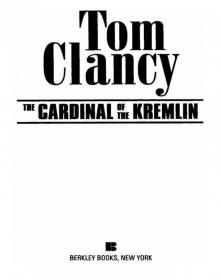 The Cardinal of the Kremlin
The Cardinal of the Kremlin Executive Orders
Executive Orders Lincoln, the unknown
Lincoln, the unknown Threat Vector
Threat Vector The Hunted
The Hunted Shadow Warriors: Inside the Special Forces
Shadow Warriors: Inside the Special Forces End Game
End Game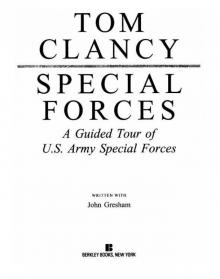 Special Forces: A Guided Tour of U.S. Army Special Forces
Special Forces: A Guided Tour of U.S. Army Special Forces Locked On
Locked On Line of Sight
Line of Sight Tom Clancy Enemy Contact - Mike Maden
Tom Clancy Enemy Contact - Mike Maden Fighter Wing: A Guided Tour of an Air Force Combat Wing
Fighter Wing: A Guided Tour of an Air Force Combat Wing Springboard
Springboard Line of Sight - Mike Maden
Line of Sight - Mike Maden EndWar
EndWar Dead or Alive
Dead or Alive Tom Clancy Support and Defend
Tom Clancy Support and Defend Checkmate
Checkmate Command Authority
Command Authority Carrier: A Guided Tour of an Aircraft Carrier
Carrier: A Guided Tour of an Aircraft Carrier Blacklist Aftermath
Blacklist Aftermath Marine: A Guided Tour of a Marine Expeditionary Unit
Marine: A Guided Tour of a Marine Expeditionary Unit Commander-In-Chief
Commander-In-Chief Armored Cav: A Guided Tour of an Armored Cavalry Regiment
Armored Cav: A Guided Tour of an Armored Cavalry Regiment Tom Clancy's Jack Ryan Books 1-6
Tom Clancy's Jack Ryan Books 1-6 The Ultimate Escape
The Ultimate Escape Airborne: A Guided Tour of an Airborne Task Force
Airborne: A Guided Tour of an Airborne Task Force Debt of Honor
Debt of Honor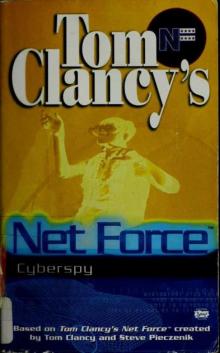 Cyberspy
Cyberspy Point of Contact
Point of Contact Operation Barracuda (2005)
Operation Barracuda (2005) Choke Point
Choke Point Power and Empire
Power and Empire Every Man a Tiger: The Gulf War Air Campaign
Every Man a Tiger: The Gulf War Air Campaign Endgame (1998)
Endgame (1998) EndWar: The Missing
EndWar: The Missing Splinter Cell (2004)
Splinter Cell (2004) The Great Race
The Great Race True Faith and Allegiance
True Faith and Allegiance Deathworld
Deathworld Ghost Recon (2008)
Ghost Recon (2008) Duel Identity
Duel Identity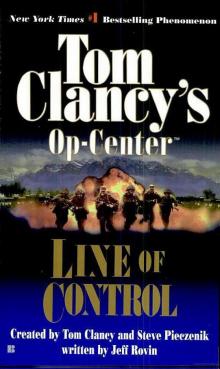 Line of Control o-8
Line of Control o-8 The Hunt for Red October jr-3
The Hunt for Red October jr-3 Hidden Agendas nf-2
Hidden Agendas nf-2 Acts of War oc-4
Acts of War oc-4 Ruthless.Com pp-2
Ruthless.Com pp-2 Night Moves
Night Moves The Hounds of Rome - Mystery of a Fugitive Priest
The Hounds of Rome - Mystery of a Fugitive Priest Into the Storm: On the Ground in Iraq sic-1
Into the Storm: On the Ground in Iraq sic-1 Threat Vector jrj-4
Threat Vector jrj-4 Combat Ops gr-2
Combat Ops gr-2 Virtual Vandals nfe-1
Virtual Vandals nfe-1 Runaways nfe-16
Runaways nfe-16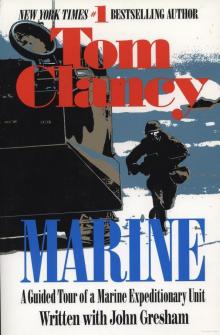 Marine: A Guided Tour of a Marine Expeditionary Unit tcml-4
Marine: A Guided Tour of a Marine Expeditionary Unit tcml-4 Shadow Warriors: Inside the Special Forces sic-3
Shadow Warriors: Inside the Special Forces sic-3 Jack Ryan Books 1-6
Jack Ryan Books 1-6 Cold Case nfe-15
Cold Case nfe-15 Changing of the Guard nf-8
Changing of the Guard nf-8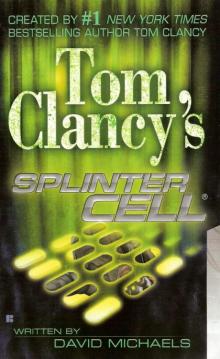 Splinter Cell sc-1
Splinter Cell sc-1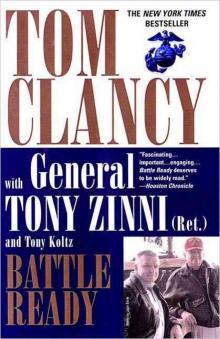 Battle Ready sic-4
Battle Ready sic-4 The Bear and the Dragon jrao-11
The Bear and the Dragon jrao-11 Fighter Wing: A Guided Tour of an Air Force Combat Wing tcml-3
Fighter Wing: A Guided Tour of an Air Force Combat Wing tcml-3 Patriot Games jr-1
Patriot Games jr-1 Jack Ryan Books 7-12
Jack Ryan Books 7-12 Mission of Honor o-9
Mission of Honor o-9 Private Lives nfe-9
Private Lives nfe-9 Operation Barracuda sc-2
Operation Barracuda sc-2 Cold War pp-5
Cold War pp-5 Point of Impact nf-5
Point of Impact nf-5 Red Rabbit jr-9
Red Rabbit jr-9 The Deadliest Game nfe-2
The Deadliest Game nfe-2 Springboard nf-9
Springboard nf-9 Safe House nfe-10
Safe House nfe-10 EndWar e-1
EndWar e-1 Duel Identity nfe-12
Duel Identity nfe-12 Deathworld nfe-13
Deathworld nfe-13 Politika pp-1
Politika pp-1 Rainbow Six jr-9
Rainbow Six jr-9 Tom Clancy's Power Plays 1 - 4
Tom Clancy's Power Plays 1 - 4 Endgame sc-6
Endgame sc-6 Executive Orders jr-7
Executive Orders jr-7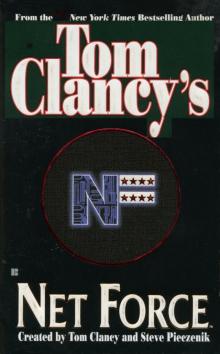 Net Force nf-1
Net Force nf-1 Call to Treason o-11
Call to Treason o-11 Locked On jrj-3
Locked On jrj-3 Against All Enemies
Against All Enemies The Sum of All Fears jr-7
The Sum of All Fears jr-7 Sea of Fire o-10
Sea of Fire o-10 Fallout sc-4
Fallout sc-4 Balance of Power o-5
Balance of Power o-5 Shadow Watch pp-3
Shadow Watch pp-3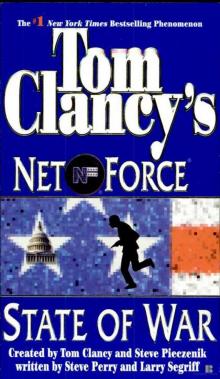 State of War nf-7
State of War nf-7 Wild Card pp-8
Wild Card pp-8 Games of State o-3
Games of State o-3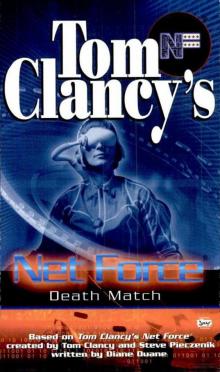 Death Match nfe-18
Death Match nfe-18 Against All Enemies mm-1
Against All Enemies mm-1 Every Man a Tiger: The Gulf War Air Campaign sic-2
Every Man a Tiger: The Gulf War Air Campaign sic-2 Cybernation nf-6
Cybernation nf-6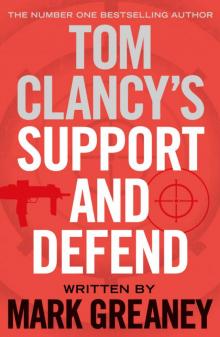 Support and Defend
Support and Defend Night Moves nf-3
Night Moves nf-3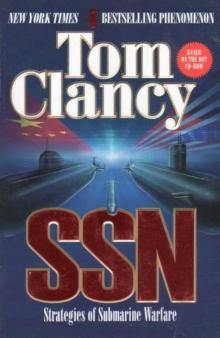 SSN
SSN Cutting Edge pp-6
Cutting Edge pp-6 The Cardinal of the Kremlin jrao-5
The Cardinal of the Kremlin jrao-5 War of Eagles o-12
War of Eagles o-12 Op-Center o-1
Op-Center o-1 Mirror Image o-2
Mirror Image o-2 The Archimedes Effect nf-10
The Archimedes Effect nf-10 Teeth of the Tiger jrj-1
Teeth of the Tiger jrj-1 Bio-Strike pp-4
Bio-Strike pp-4 State of Siege o-6
State of Siege o-6 Debt of Honor jr-6
Debt of Honor jr-6 Zero Hour pp-7
Zero Hour pp-7 Ghost Recon gr-1
Ghost Recon gr-1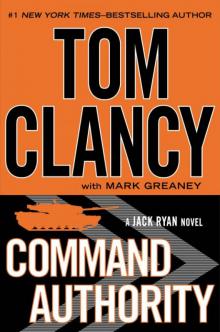 Command Authority jr-10
Command Authority jr-10 Tom Clancy's Power Plays 5 - 8
Tom Clancy's Power Plays 5 - 8 Checkmate sc-3
Checkmate sc-3 Breaking Point nf-4
Breaking Point nf-4 Gameprey nfe-11
Gameprey nfe-11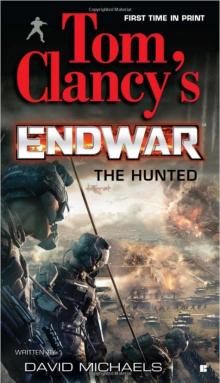 The Hunted e-2
The Hunted e-2 Hidden Agendas
Hidden Agendas Divide and Conquer o-7
Divide and Conquer o-7